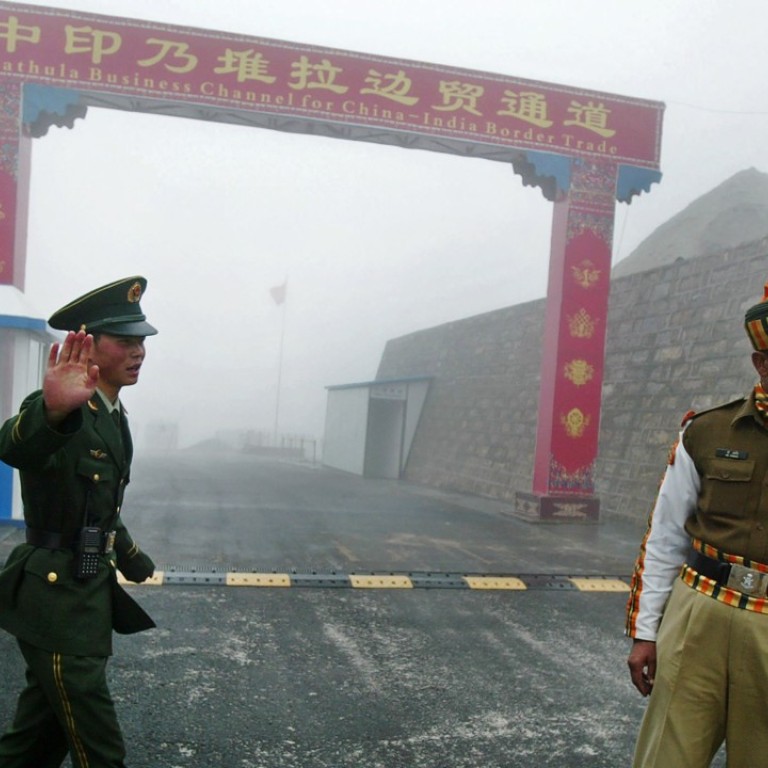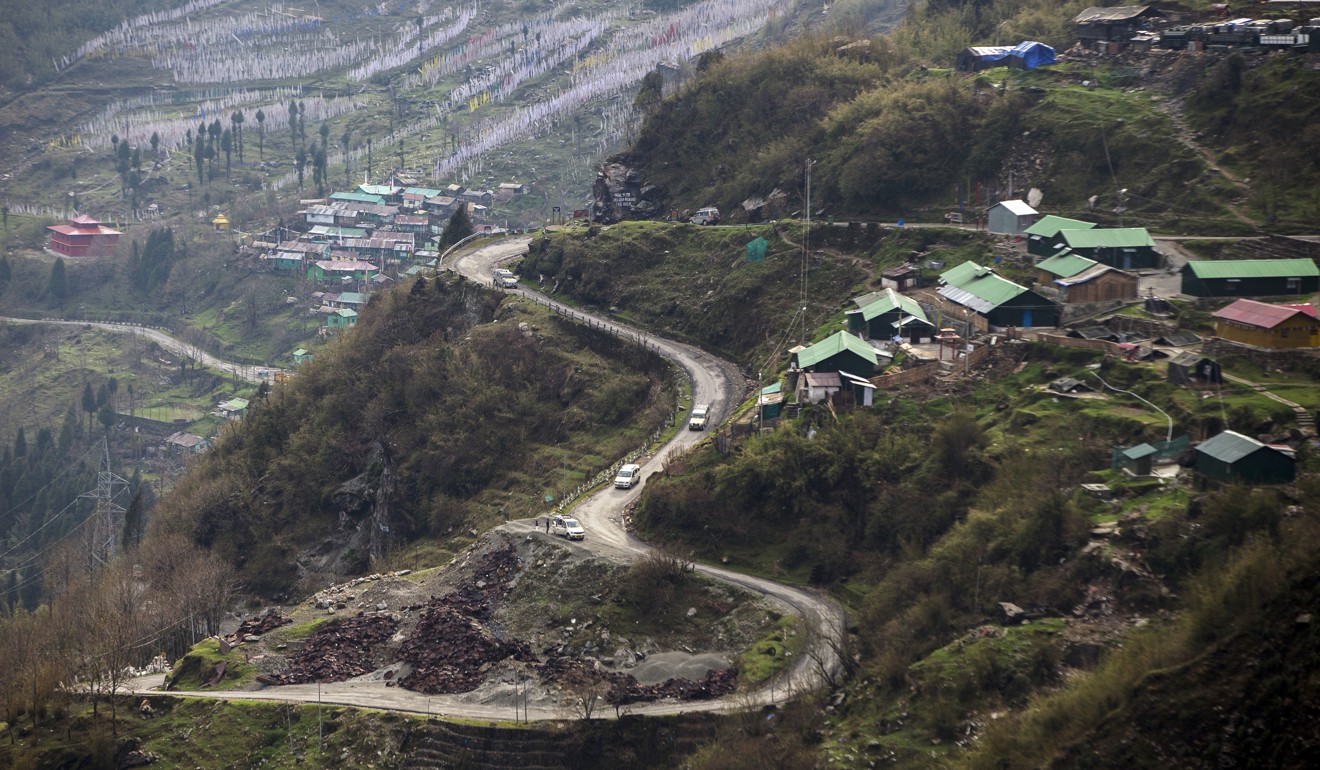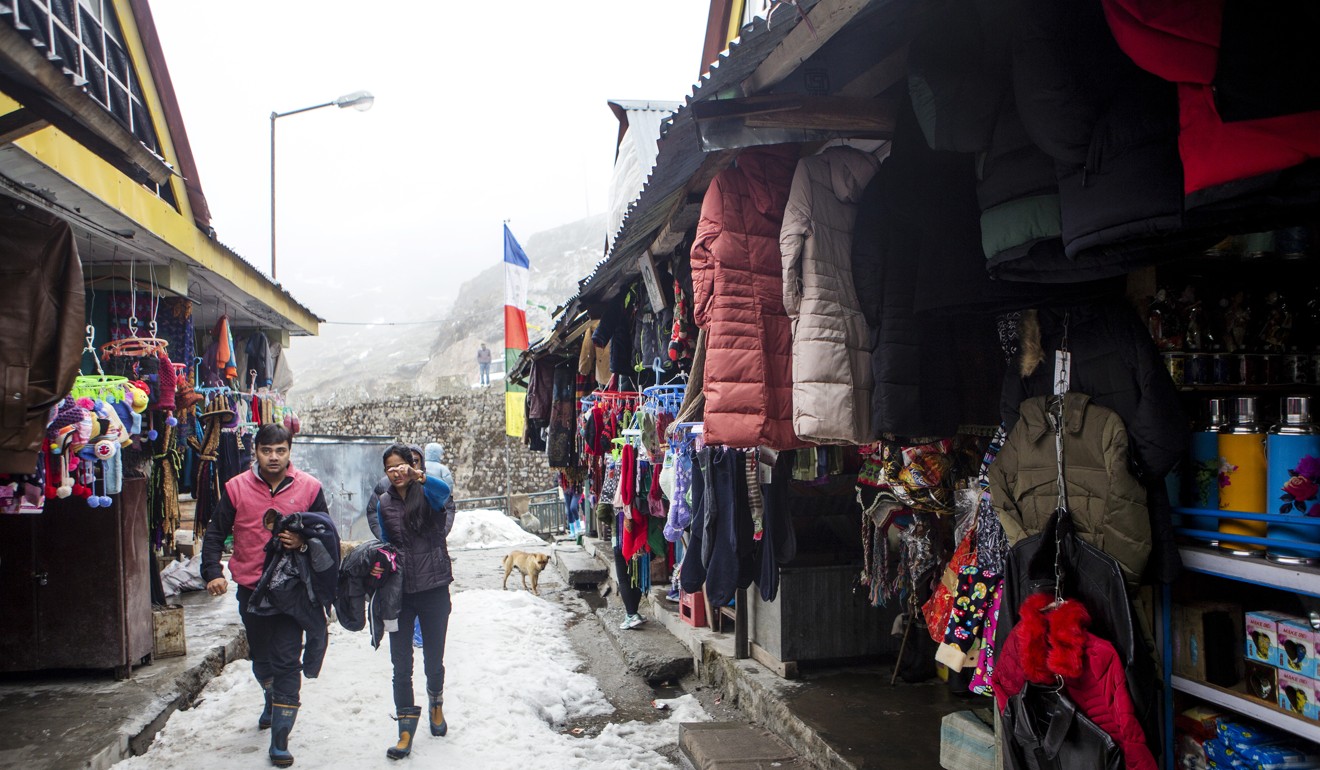
Down on the border, simmering China-India stand-off raises fears for local lifeline
Sikkim MP warns that Beijing is ramping up secessionist rhetoric
As an eyeball-to-eyeball stand-off between Indian and Chinese troops high in the Himalayas enters its second month, China’s state-controlled media is adopting a more aggressive stance on border issues.
For example, in a lengthy feature published on Monday, the Global Times, a nationalist tabloid, said some residents of Sikkim, the Indian state closest to the site of the stand-off, were experiencing an “identity crisis”.
It said most did not identify themselves as Indians, and quoted a Chinese researcher as saying they felt closer to China.
The man who represents Sikkim in India’s parliament, Prem Das Rai, described the prolonged stand-off, the first in the area since a clash in 1967, as a “new phenomenon” that was different and more severe than the run-of-the-mill, non-violent cross-border incidents seen in the past 50 years.
“Usually border incursions are sorted out within days, but this one has been going on for over a month,” he told the South China Morning Post.
Rai said he was alarmed by the increasingly strident tone taken by Chinese media as it touted the notion of Sikkim independence. Sikkim merged with India following a referendum in 1975.

“Although China recognised India’s annexation of Sikkim in 2003, it can readjust its stance on the matter,” the Global Times warned in an editorial published on July 5. “As long as there are voices in Chinese society supporting Sikkim’s independence, the voices will spread and fuel pro-independence appeals in Sikkim.”
Beijing started to publish maps showing the state in Indian territory in 2003, but China has yet to unequivocally accept Sikkim as part of India.
Rai said such wording reflected Beijing’s intention to stir up trouble in the border region.
“It seems China is fuelling anti-India sentiment within the state,” he said. “This is meddling in the internal affairs of India.”
Despite the tensions, Indian travel agent Satish Bardewa, who recently took a group of tourists to the Nathu La pass on India’s border with China, just 11km from the stand-off in neighbouring Bhutan, said life appeared to be carrying on as normal.
As Indian troops invited into the area by Bhutan’s government faced off with Chinese troops, Bardewa said young Chinese soldiers standing guard at the nearby pass, the site of a fierce clash between Indian and Chinese troops 50 years ago, appeared friendly two weeks ago when members of the Indian tour group started waving at them.
“Both sides waved hands,” he said. “That’s a normal way of exchanging greetings.”
However, Rai said he was concerned the crisis, which has made international headlines, could lead to more than a war of words and damage the local economy.

He said border spats would hurt the tourism industry, which accounted for 65 per cent of Sikkim’s gross domestic product. According to official figures, more than 800,000 tourists visited Sikkim last year, including 66,012 foreigners.
“Any conflict of this kind would hurt the peaceful nature of Sikkim and the tourists might not come here,” Rai said.
Beijing has closed the Nathu La pass to Indian pilgrims wanting to visit Tibet’s Mount Kailash and Lake Manasarovar, sacred to both Hindus and Buddhists, and Rai said that would cause a further drop in visitor arrivals.
Local tourism had already taken a hit in the past month due to violence in the nearby Darjeeling hills.
Tour agents said transport had been disrupted by an ethnic-Nepali party pushing for independence for the neighbouring state, causing many tourists to cancel their bookings.
Visitors to strategically important Sikkim face extra restrictions even in normal times. Foreigners need to obtain a special permit on top of their visas, and citizens of China, Pakistan, Bangladesh, Myanmar and Nigeria need to get the prior approval of the government in New Delhi before entering the state. Only Indian nationals are allowed to enter the Nathu La area, where visitors can ride yaks and visit a scenic lake.
Bardewa said if it was easier for Chinese to visit Sikkim it would be “a huge market” and “help in the friendship between the two countries”.

Tshering Dorjee, another travel agent in Sikkim, said none of his customers, who came from southern India, had cancelled trips due to the stand-off because Sino-Indian rivalry was a recurrent theme in the news.
In April, a visit by Tibetan spiritual leader the Dalai Lama, whom China regards a separatist, to a disputed region on the other side of Bhutan, Indian-controlled Arunachal Pradesh, also drew strong protests from Beijing.
“Every time India does something about the Dalai Lama, China gets angry,” Dorjee said. “It cools down after a while. These are all on the international level. Nothing happens on the ground.”
Bardewa said he had been getting calls from tourists who were concerned about the situation. Although he had assured them it was safe, he was braced for a decline in tourist numbers during Sikkim’s upcoming peak travel season.
“When I see news about Sikkim in the Indian media, I feel like I’m watching a movie,” he said, adding that videos showing soldiers jostling were mostly historical footage. “If I didn’t live here, I would believe it was serious.”

This week he took two Thai women to Zero Point, another attraction in northern Sikkim close to the Chinese border.
One of the tourists, Tussanee Koi, who returned to Bangkok from Sikkim on Wednesday, said she had considered abandoning the trip after seeing news about the border stand-off.
“My agent said Sikkim was safe, so I decided to go,” she said. “The place was peaceful. The mountains and white clouds were very natural and beautiful.”

